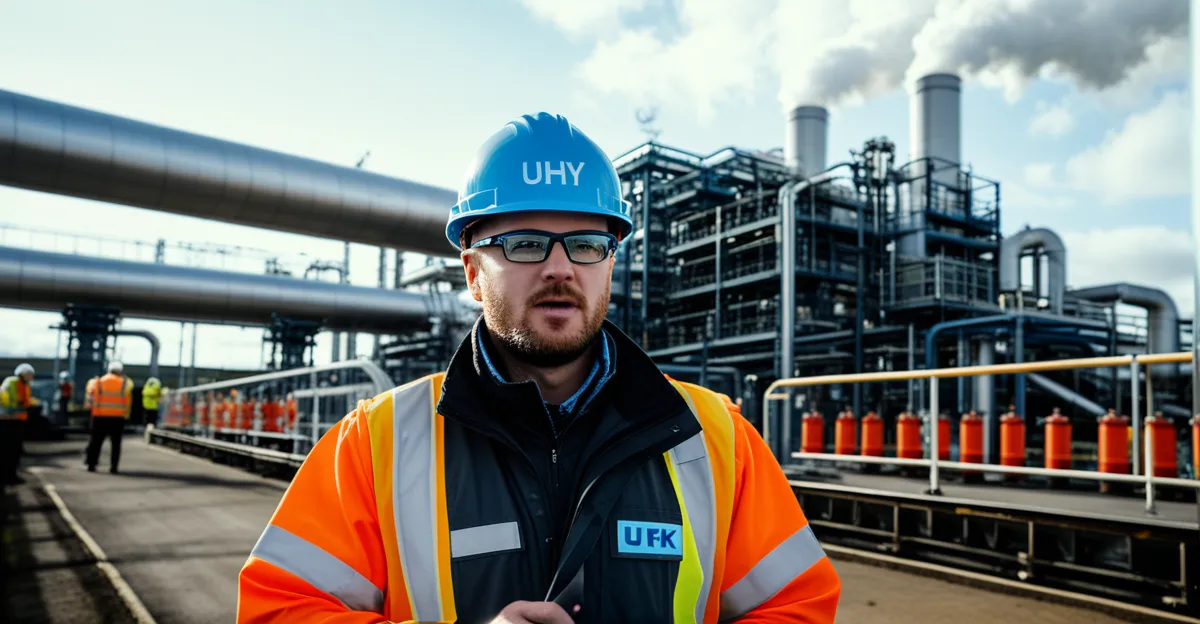Overview of the UK’s Hydrogen Fuel Infrastructure Strategy
The UK hydrogen strategy is central to the nation’s ambitious net zero objectives, highlighting hydrogen as a key clean energy vector. This strategy reflects comprehensive national hydrogen plans that focus on integrating hydrogen into the broader energy system, supporting decarbonisation across transport, industry, and heating sectors.
The government’s commitment includes clear infrastructure overview goals that prioritize the development of hydrogen production, storage, and distribution facilities. These plans outline advancing green hydrogen generated from renewable sources and blue hydrogen derived from natural gas with carbon capture. Additionally, the strategy emphasizes enabling a reliable pipeline network and expanding refueling stations to support the growing use of hydrogen in transportation.
This might interest you : What Are the Emerging Technologies Revamping the UK Automotive Industry?
By situating hydrogen within the UK’s energy transition, the plan aims to reduce reliance on fossil fuels while enhancing energy security. The strategy also sets out specific milestones guiding infrastructure roll-out throughout the 2020s, ensuring alignment with climate targets. This coordinated approach underscores hydrogen’s pivotal role in achieving the UK’s clean energy future.
Major Government Initiatives and Funding Announcements
The UK government investment in hydrogen infrastructure is a cornerstone of the nation’s commitment to net zero. Central to this effort is the Net Zero Hydrogen Fund, providing vital financial support that accelerates project development across the hydrogen value chain. This fund targets the scaling up of both green and blue hydrogen production, fostering innovation and capacity building.
Also to read : What role does artificial intelligence play in UK vehicle manufacturing?
Public sector funding complements regulatory measures within the broader hydrogen infrastructure funding framework. It incentivizes private sector involvement, mitigating commercial risks associated with early-stage technologies. This collaboration is embodied in multiple public-private partnerships, where government agencies and industry leaders jointly develop production sites, distribution networks, and refueling stations.
Notable government initiatives, such as the 2021 Hydrogen Strategy, set clear objectives and outline substantial investment plans. These efforts aim to coordinate infrastructure deployment while aligning with UK climate goals. By strategically combining financial resources and expertise, the government ensures the hydrogen sector can thrive, bridging gaps between research, demonstration projects, and commercial operation. This robust funding landscape positions the UK as a leader in hydrogen infrastructure innovation.
Timeline and Roadmap for Hydrogen Infrastructure Deployment
The deployment timeline for the UK’s hydrogen infrastructure is carefully structured to transition from pilot projects in the early 2020s to widespread commercial scale-up by the 2030s. This phased approach reflects the government’s strategic planning within the hydrogen infrastructure rollout framework, enabling controlled growth with clear development milestones.
Initial stages focus on demonstrating feasibility and refining technology through pilot plants and limited distribution networks. By mid-decade, efforts intensify to expand hydrogen production capacity—both green and blue—and establish more refueling stations. The roadmap explicitly targets scaling up electrolyser installations and enhancing pipeline connectivity, reflecting the deployment timeline’s emphasis on integration with existing energy systems.
Key milestones include achieving gigawatt-scale production capacities and establishing regional hydrogen hubs. These targets align with the UK’s national hydrogen plans, ensuring infrastructure development supports the broader energy transition. Progress is continuously monitored through government reports, guiding timely adjustments and investments.
By adhering to this timeline, the UK ensures that hydrogen infrastructure matures in concert with market demand and technology readiness. This methodical approach mitigates risks linked to premature deployment while maximizing benefits for decarbonisation and energy security.
Alignment with Climate, Energy Security, and Net Zero Goals
The UK hydrogen strategy is tightly aligned with the country’s ambitious hydrogen net zero UK targets to achieve net zero emissions by 2050. This alignment is embedded in the climate strategy, which designates hydrogen as a cornerstone for decarbonising hard-to-abate sectors such as heavy industry, shipping, and heating. Hydrogen’s role extends beyond emissions reduction; it enhances the energy transition by improving flexibility in the power system and enabling storage of surplus renewable energy.
The national hydrogen plans explicitly integrate hydrogen development with broader climate objectives, emphasizing the replacement of fossil fuels and reducing carbon intensity across multiple sectors. Hydrogen’s compatibility with offshore wind and other renewables maximizes clean energy use, bolstering energy security by diversifying supply sources.
Government reports underline hydrogen infrastructure as essential to meet interim climate milestones throughout the 2020s, supporting a resilient transition. This approach ensures that hydrogen deployment complements wider decarbonisation efforts, aligning with policies on renewables integration, grid stabilization, and clean fuel adoption. By synchronizing these strategies, the UK positions hydrogen both as a vital climate solution and a mechanism to safeguard long-term energy reliability.
Challenges and Barriers to Scaling Hydrogen Infrastructure
Scaling hydrogen infrastructure in the UK faces several hydrogen policy challenges UK that must be addressed to achieve widespread deployment. Regulatory barriers remain significant, including the need for clear safety standards and streamlined permitting processes. These regulatory hurdles can delay project timelines and increase costs.
Infrastructure bottlenecks also hamper growth. The existing energy network requires adaptation to accommodate hydrogen—pipelines, storage, and refueling station networks must be expanded and integrated carefully. Technology readiness varies across production methods, with electrolyser efficiency and carbon capture technologies still evolving.
Market uncertainties further complicate investment decisions. Without stable policies and incentives, private sector confidence weakens, slowing infrastructure rollout. Addressing skills shortages and supply chain gaps is equally critical; a skilled workforce and reliable supply lines are essential for robust hydrogen infrastructure development.
Efforts to overcome these barriers include government-led consultations and pilot projects aimed at regulatory reform and technology validation. Coordinated action across stakeholders helps mitigate risks, enabling smoother scale-up of hydrogen infrastructure aligned with the UK’s climate and energy goals.











